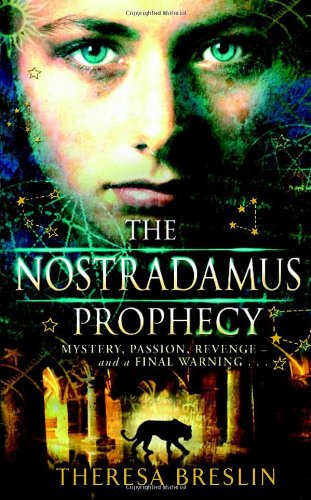The Nostradamus Prophecy
Sixteenth-century France, a country divided by sectarian hatred: Protestant Huguenots versus Catholics. The weak King Charles is ruled by his mother, the formidable Catherine de Medici. Catherine is greatly influenced by the seer, Nostradamus, whose predictions of bloodshed make her even more suspicious and ruthless.
Twelve-year-old Mélisande, the court minstrel’s daughter, is too young to understand political complexities and takes little notice of Nostradamus’s unexpected interest in her. Then she crosses the powerful Count de Ferignay, and things become dangerous. When tragedy strikes, Mélisande flees for her life and Nostradamus is the only person she can trust.
But Nostradamus’s home town of Salon has its own dangers, and soon more than one person is looking for Mélisande. In the six years leading up to the 1572 massacre of Huguenots on St. Bartholomew’s Eve, Mélisande must learn what destiny wants from her — but will she have the wisdom and strength to carry it out?
This book is certainly a rip-roaring read, but I confess I found Mélisande something of a pain. Her father asks her not to go somewhere — she goes; he begs her to keep silent — she talks; her safety requires that she covers her face — she locks eyes with the villain. And she rarely learns from her mistakes. She comes across as a 21st century teenager in 16th century costume. Would a virtuous 16th century girl of good family really make love to a young man who, however sexy and courageous, is beneath her in rank and who, by the conventions of the age, she could never marry? An act which would destroy her reputation and render her unmarriageable. I think not.
However, the book is unquestionably well-researched, and the author brings out the turbulence and danger of the times and illuminates the main protagonists brilliantly.
For girls, 12 plus.
–Elizabeth Hawksley
At the turn of the first page you are immediately thrust straight into the hustle and bustle of 16th-century France, and I think that this is where the true beauty of the book lies. Really, it is an ideal backdrop for any story, with the rivalry for status that went on in courts at that time. However, I felt that the exciting and adventurous plot was somewhat let down by the style of the writing, which, although good in parts, did not have the consistency that I craved. Indeed, I found that although it was easy to follow it was sometimes too basic. Providing, in my opinion, a slight mismatch between the simplistic style of the writing and the plot – which I believe is far better suited to older readers. On a brighter note the book is almost entirely historically accurate and so provides an interesting yet enjoyable portal into 16th-century France.
–Rachel Chetwynd-Stapylton (age 16)










